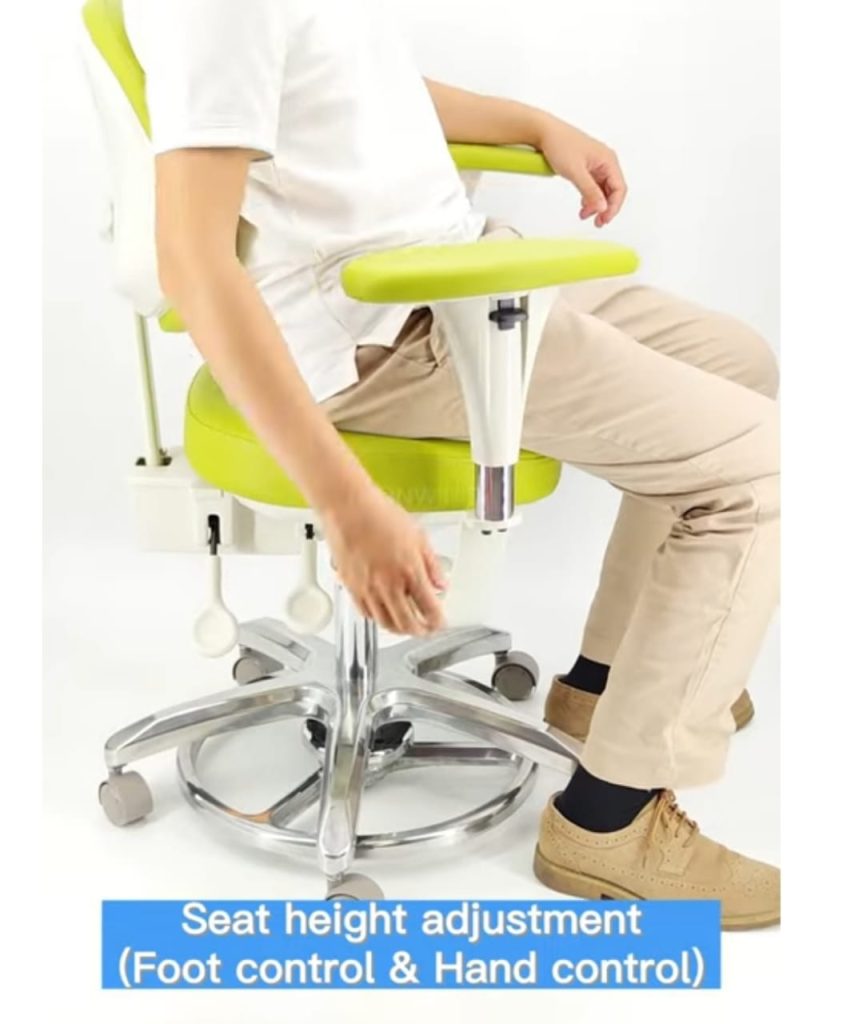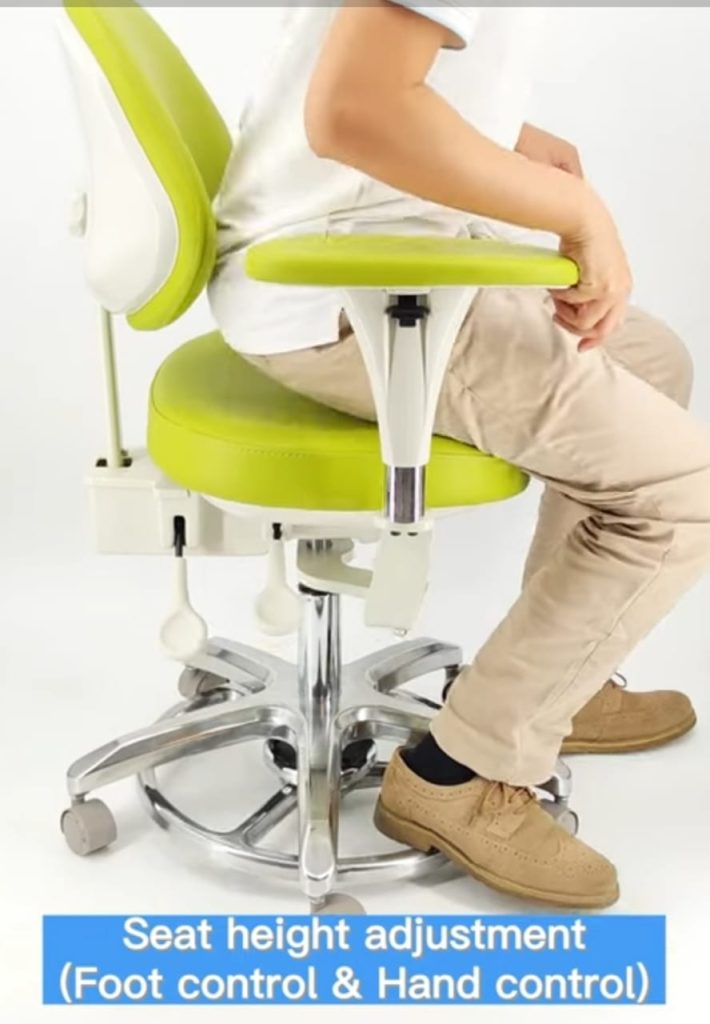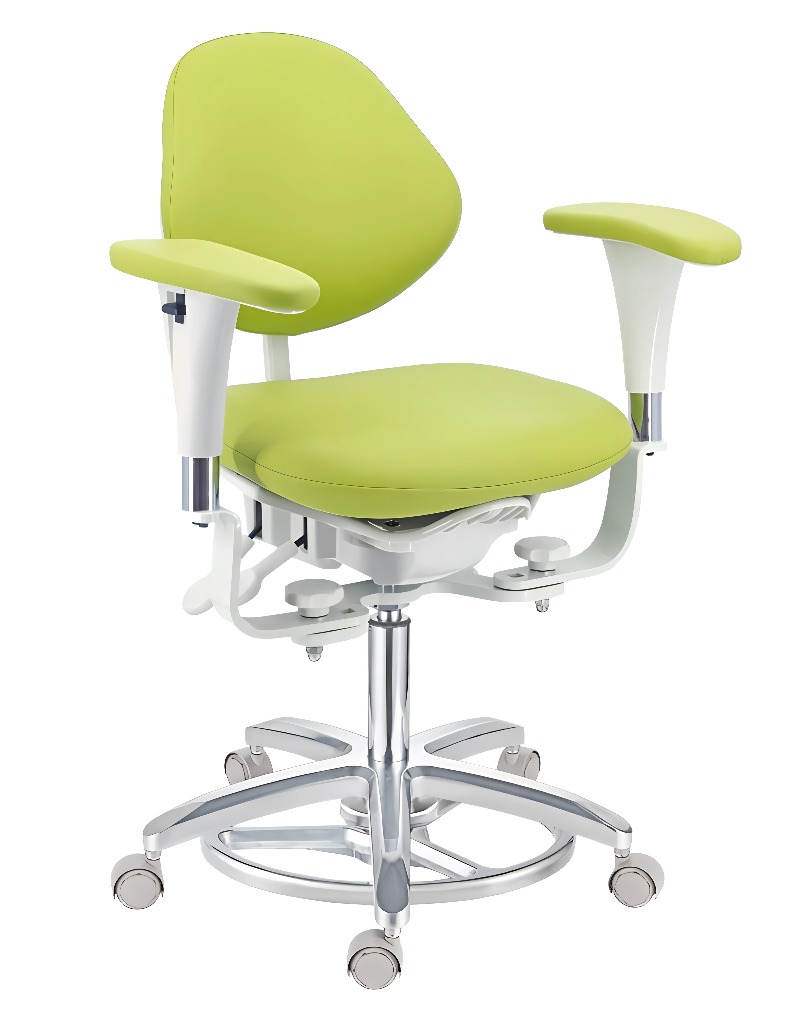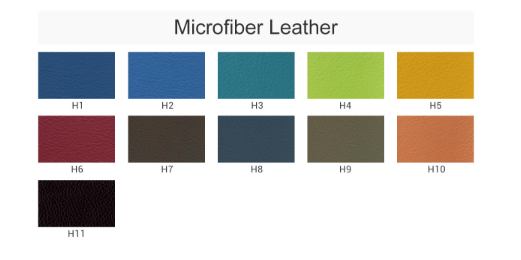- +6013 612 2559
- enquiry@fmc-group.co
- 9-2F Jalan Setia Perdana BD, U13/BD Setia Alam, 40170 Shah Alam, Selangor
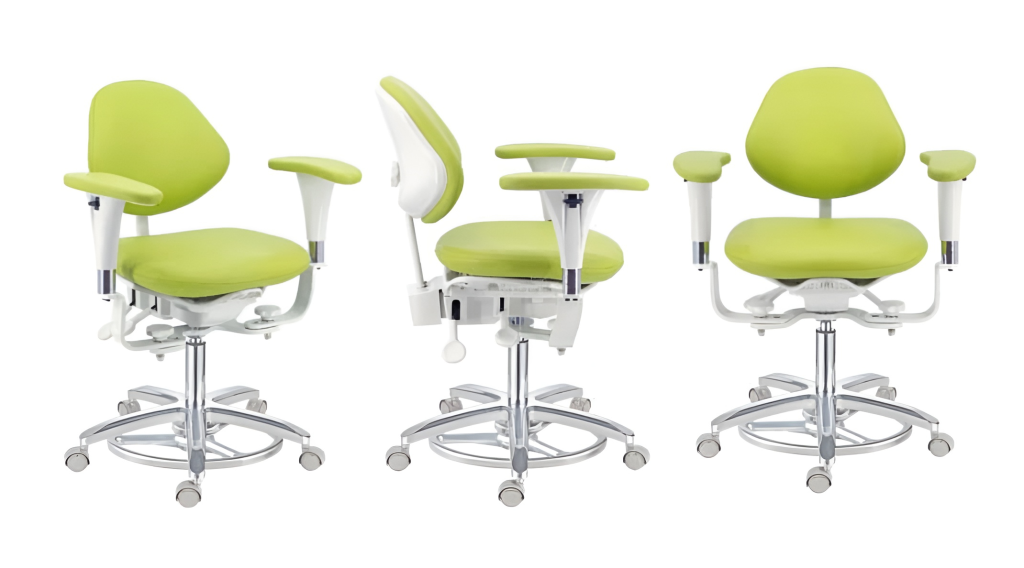
Foot-operated surgeon chairs significantly enhance hygiene and infection control in surgical environments by providing hands-free adjustment of chair functions, thus minimizing the risk of cross-contamination.
How Foot Operation Improves Hygiene
- Maintains Sterility: The primary benefit is allowing the surgeon to adjust the chair’s height, tilt, or the central brake system without using their hands, which may be scrubbed and sterile during a procedure. This is essential for adhering to strict aseptic techniques and preventing the transfer of microbes from non-sterile surfaces to the sterile field.
- Reduces Cross-Contamination: By eliminating manual contact with adjustment levers during surgery, the potential for spreading bacteria and other pathogens within the operating room is greatly reduced.
- Seamless Workflow: Hands-free control allows the surgeon to make quick, precise adjustments while remaining focused on the patient and the procedure, ensuring an uninterrupted and hygienic workflow.
Key Hygiene Features of the Chairs
In addition to foot controls, these chairs often include other features designed for a hygienic environment:
- Easy-to-Clean Materials: Upholstery is made of medical-grade, non-porous vinyl or other materials that are resistant to microbial growth and can withstand repeated disinfection with alcohol or chlorine-based agents.
- Seamless Surfaces: The design minimizes recesses, joints, and seams where dirt, fluid, and bacterial debris could otherwise accumulate and become difficult to clean.
- Hygienic Design: Features like plastic shields on the backrest or underside of the seat further facilitate easy cleaning.
- Antistatic Components: Antistatic wheels help prevent the accumulation of static electricity and ensure smooth, quiet movement for cleaning purposes.
Foot-operated surgeon chairs are a crucial part of a comprehensive infection control strategy in operating rooms and other medical settings, balancing essential ergonomic support with strict hygiene requirements.
